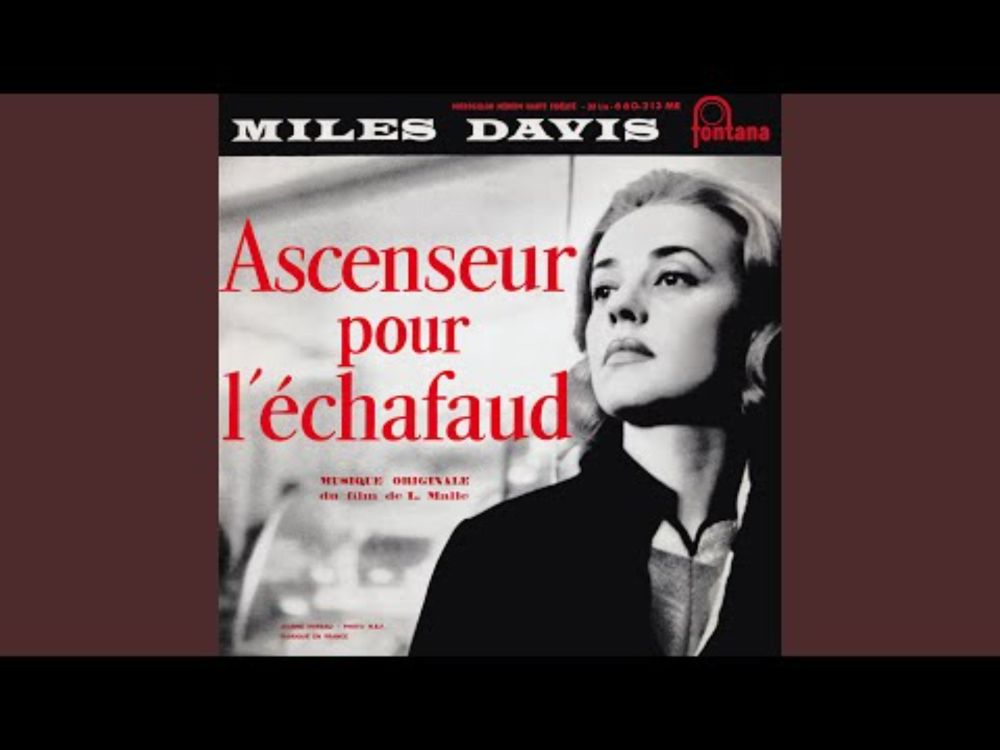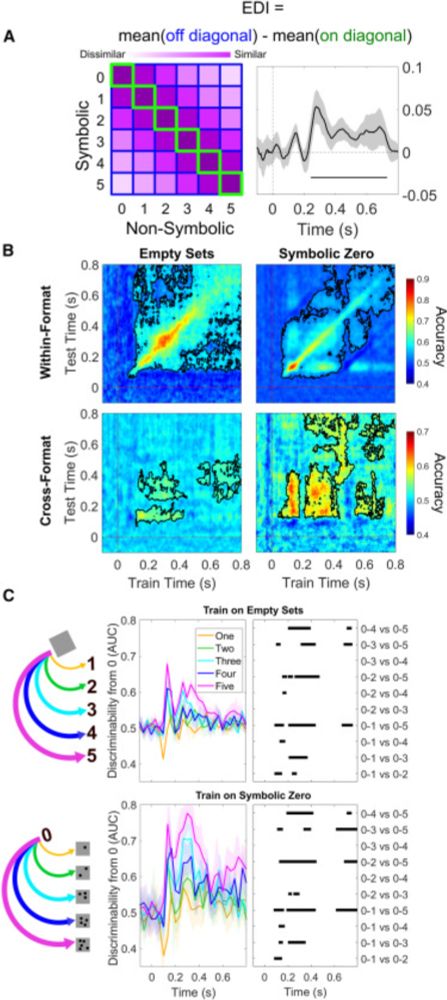And as for writing, don't get me started. Most often, the process of writing is not a laborious business of transcription, but a process of thinking itself. I'm not about to outsource my thinking to a machine.
26.09.2025 10:50 — 👍 139 🔁 26 💬 1 📌 2
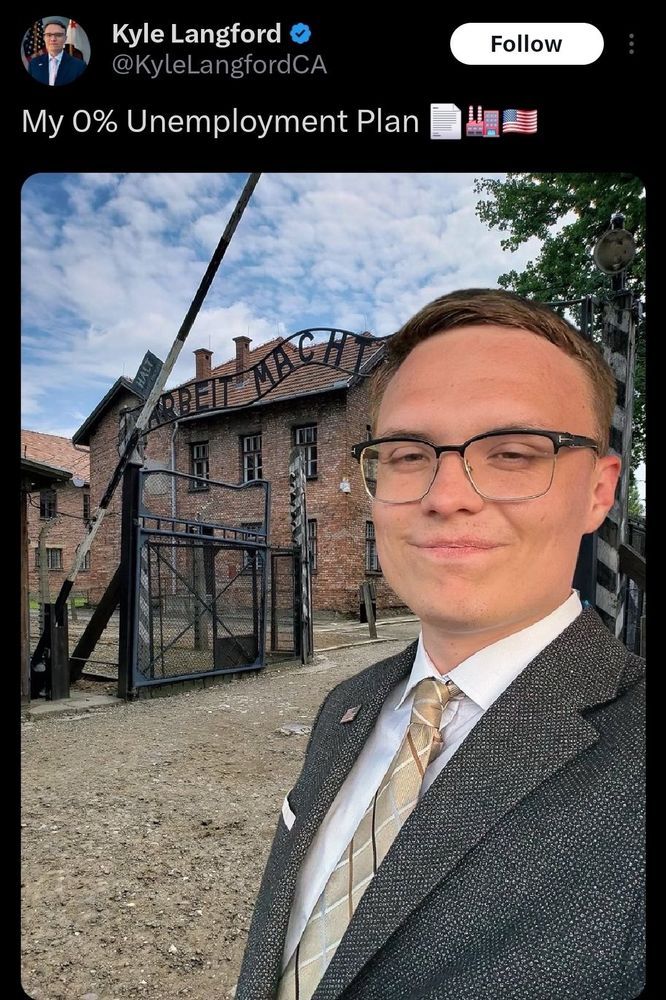
A post on X by Kyle Langford, with a composite photo showing him standing outside the gates of Auschwitz, and the caption: "My zero unemployment plan", with an emoji of factory chimneys.
I know there's a risk of amplifying the fascist horror show, but I think we need to be aware of just how far things are going, especially as this man is a Republican candidate for governor of California. All the old safeguards are being deliberately torn down, and the unspeakable normalised.
28.07.2025 10:22 — 👍 2543 🔁 939 💬 261 📌 183
YouTube video by Miles Davis - Topic
Générique (Bande originale du film "Ascenseur pour l'échafaud")
There is still so much we don’t know about the brain’s ability to deal with absence, and we hope this study goes some way towards revealing the different ways we are able to represent ‘nothing.’
25.07.2025 09:23 — 👍 5 🔁 0 💬 0 📌 0
These findings help extend previous distinctions between perception and cognition to the case of absences and, at least in adult humans, suggest that abstract concepts of absence are not rooted in more primitive representations of sensory absence.
25.07.2025 09:23 — 👍 3 🔁 0 💬 1 📌 0
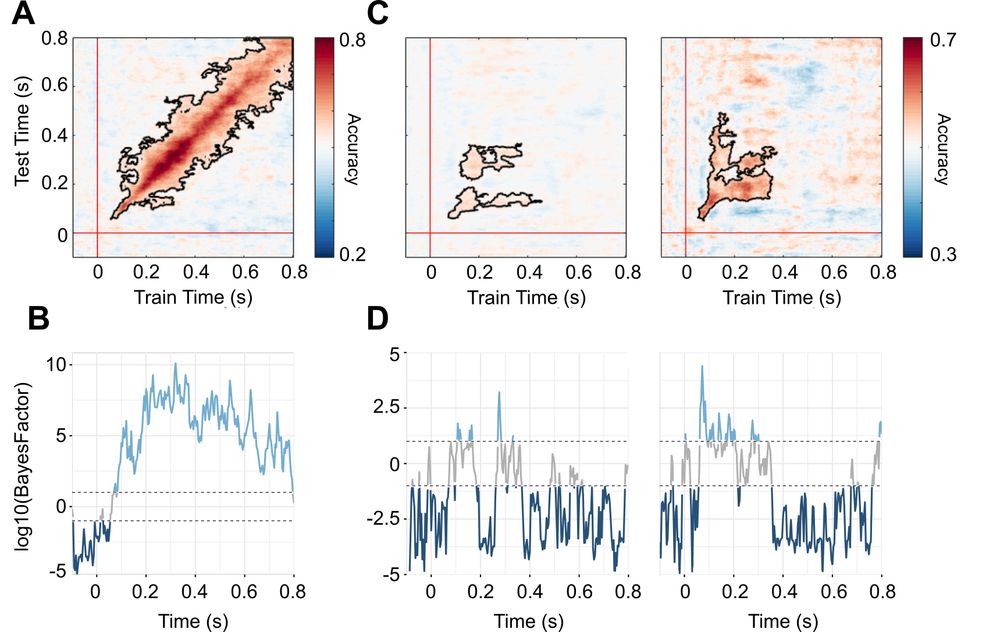
Moreover, this was in spite of low-level visual similarities between perceptual and non-symbolic absences, which could otherwise drive spurious generalisation between the two domains.
25.07.2025 09:23 — 👍 2 🔁 0 💬 1 📌 0
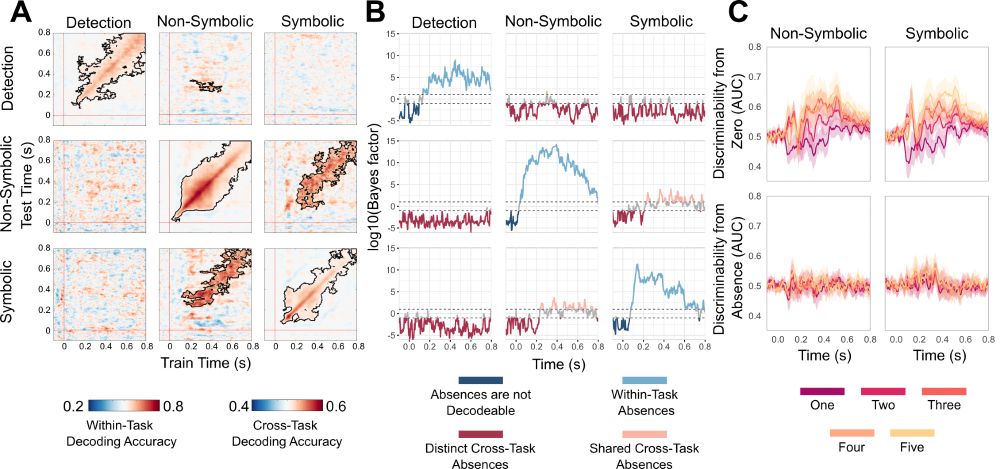
We built on these results to study how numerical and perceptual absences related to each other – finding surprisingly strong evidence for distinct neural representations of different types of absence.
25.07.2025 09:23 — 👍 6 🔁 1 💬 1 📌 0
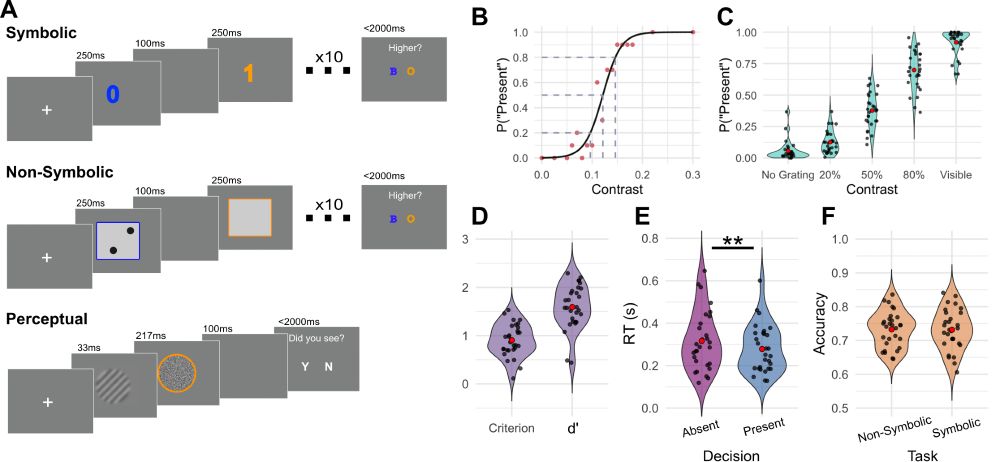
To characterise the brain’s representation of various absences, we had participants perform three different tasks in the MEG scanner, each involving absence from a different domain: perceptual, non-symbolic numerosity, and symbolic number.
25.07.2025 09:23 — 👍 2 🔁 0 💬 1 📌 0
Likewise, how we are able to conceptualise absence – e.g., as the number zero – is not straightforward either. How did we create something out of nothing?
25.07.2025 09:23 — 👍 2 🔁 0 💬 1 📌 0
But how the brain deals with absences is not currently known. Sensory systems are typically geared to detect the presence of objects in our environment, so how we are able to perceive absences is not a straightforward question.
25.07.2025 09:23 — 👍 2 🔁 0 💬 1 📌 0

What do the music of Miles Davis, the paintings of Edward Hopper, and the equations of Isaac Newton have in common? They all rely – in different ways – on absences.
25.07.2025 09:23 — 👍 5 🔁 1 💬 1 📌 0
A ✨bittersweet✨ moment – after 5 years at UCL, my final first-author project with @smfleming.bsky.social is ready to read as a preprint! 🥲
25.07.2025 09:23 — 👍 29 🔁 7 💬 2 📌 1
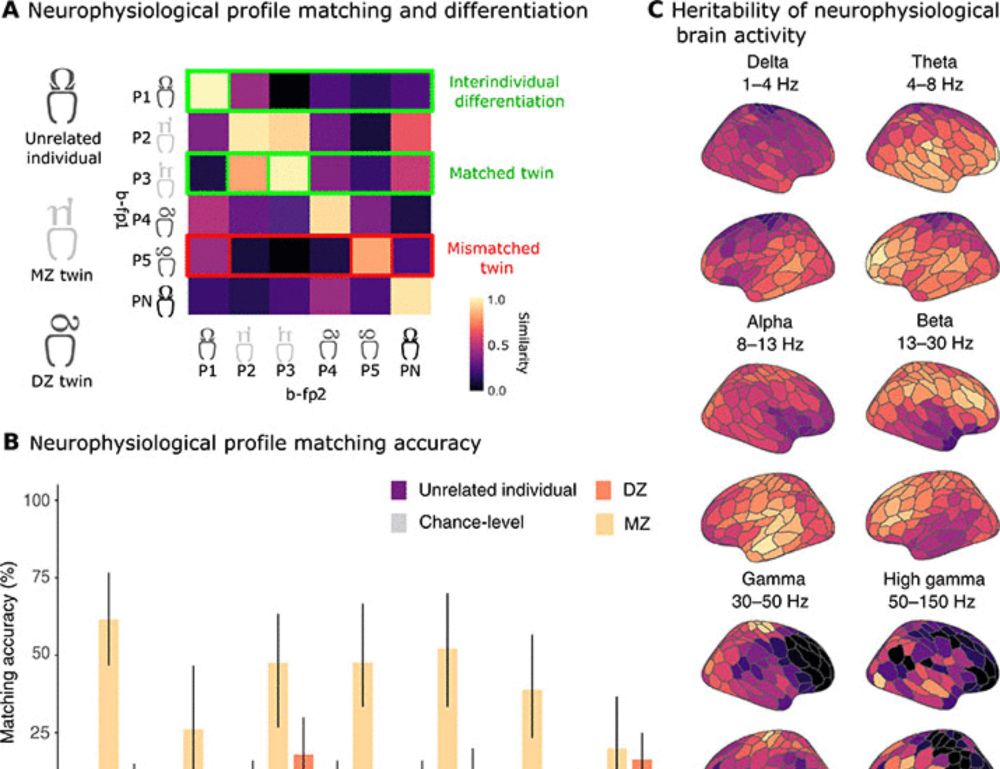
Genetic foundations of interindividual neurophysiological variability
Individual brain activity profiles are shaped by lifelong genetic influences.
Very proud to share this one🥹! We show that personalized signatures of brain activity are heritable and relate to the expression of specific genes. That means my brain-fingerprint is very similar to my twin brother's! #ResearchIsMeSearch🧠 🧬 ♊️
24.07.2025 08:20 — 👍 37 🔁 15 💬 1 📌 0
OSF
After five years of confused staring at Greek letters, it is my absolute pleasure to finally share our (with @smfleming.bsky.social) computational model of mental imagery and reality monitoring: Perceptual Reality Monitoring as Higher-Order inference on Sensory Precision ✨
osf.io/preprints/ps...
23.07.2025 14:18 — 👍 128 🔁 35 💬 4 📌 4
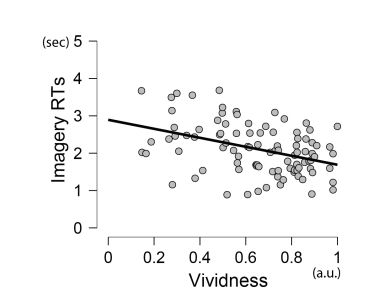
Is vivid imagery reported faster than weak imagery?
YES. There is an inverse correlation between subjective vividness and RTs in imagery tasks (N=117).
doi.org/10.1016/j.co...
23.07.2025 11:17 — 👍 29 🔁 7 💬 2 📌 0
Always late to the party, but really excited to share this new preprint led by @benjyb.bsky.social where we find an intriguing link between vividness ratings and reaction times!🧠💭
23.07.2025 09:53 — 👍 9 🔁 1 💬 0 📌 0
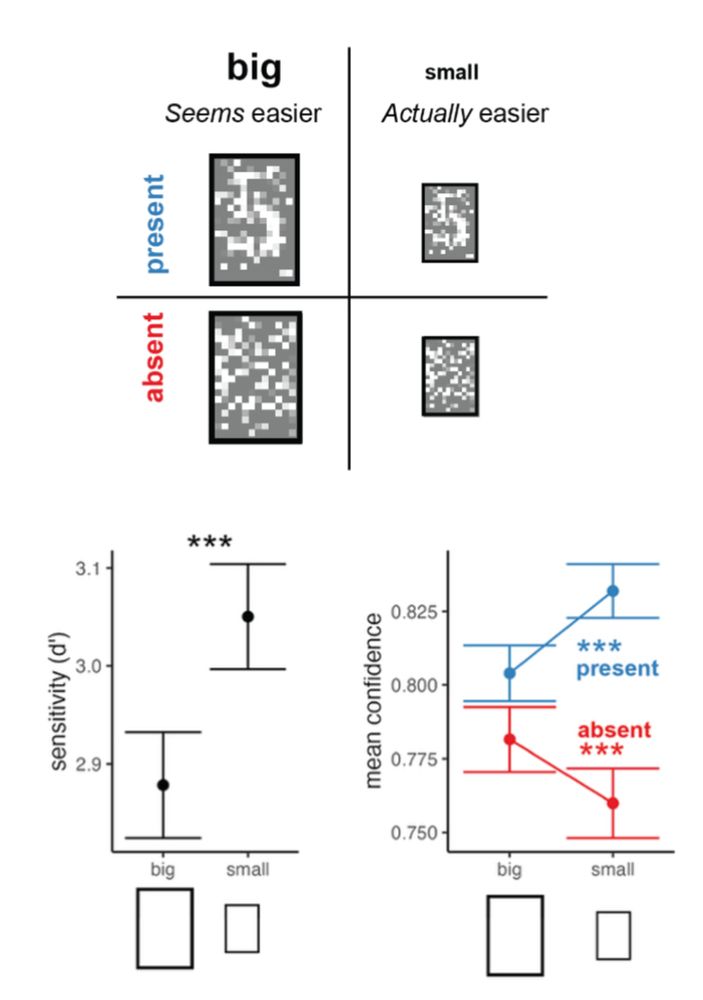
Confidence in absence as confidence in counterfactual visibility: a CogSci proceedings paper with star MSc student Maya Schipper, is now out on PsyArXiv:
osf.io/preprints/ps...
🧵👇
23.07.2025 03:23 — 👍 55 🔁 18 💬 3 📌 0
Hey Will, thanks for the tip. We checked again and everything looks ok to us. The data/code are up on OSF though so feel free to take a look and email me if you find anything!
22.07.2025 10:56 — 👍 5 🔁 0 💬 0 📌 0
#neuroskyence #PsychSciSky
21.07.2025 15:03 — 👍 1 🔁 0 💬 0 📌 0
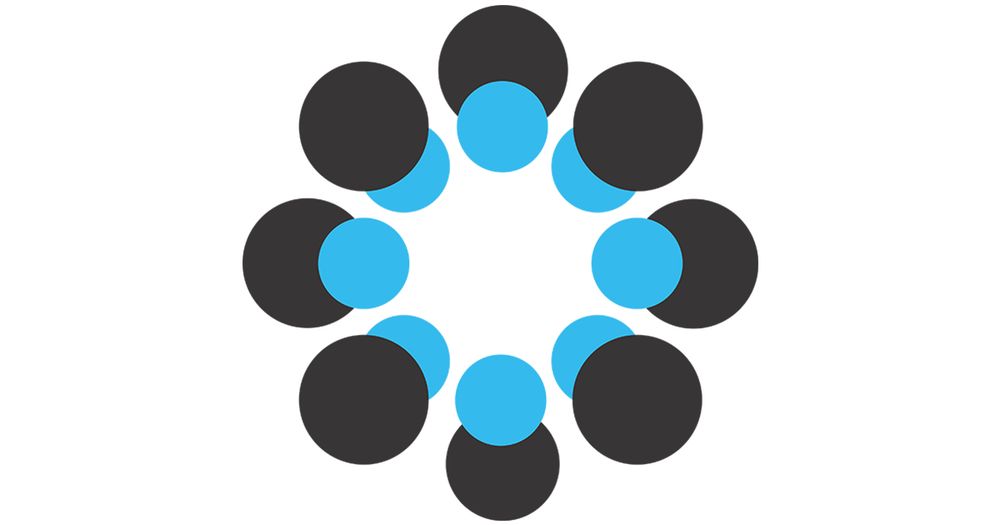
RT x Vividness
Hosted on the Open Science Framework
All data and code for the paper can be found here: osf.io/g7tjh/.
We would be very interested if other people found similar patterns in their data!
21.07.2025 14:57 — 👍 3 🔁 0 💬 1 📌 0
We hope that by drawing attention to this effect, future models of imagery will start to tease apart the distinct contributions of imagery formation and evaluation to subjective reports of imagery, which is essential for the discussion around unconscious imagery.
21.07.2025 14:57 — 👍 3 🔁 1 💬 1 📌 0
We speculate as to whether our results point towards a shared process of evaluating subjective visual experiences across perception and imagery.
21.07.2025 14:57 — 👍 3 🔁 0 💬 1 📌 0
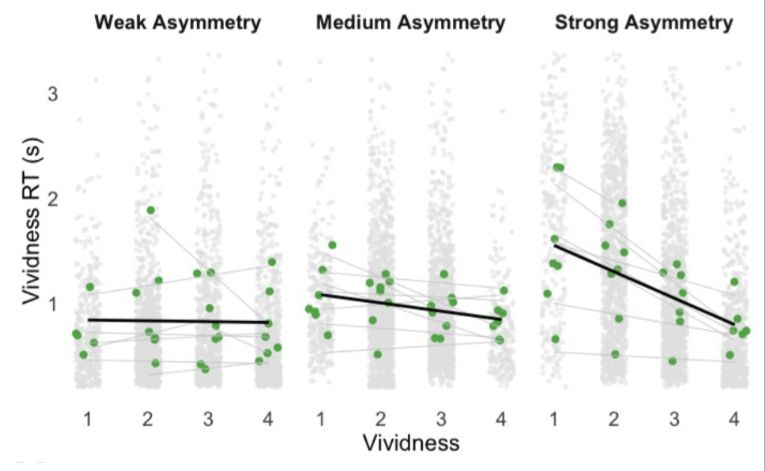
We show that individual differences in this perceptual RT asymmetry - as well as trait imagery vividness - predicts imagery RT asymmetry.
21.07.2025 14:57 — 👍 4 🔁 0 💬 1 📌 0
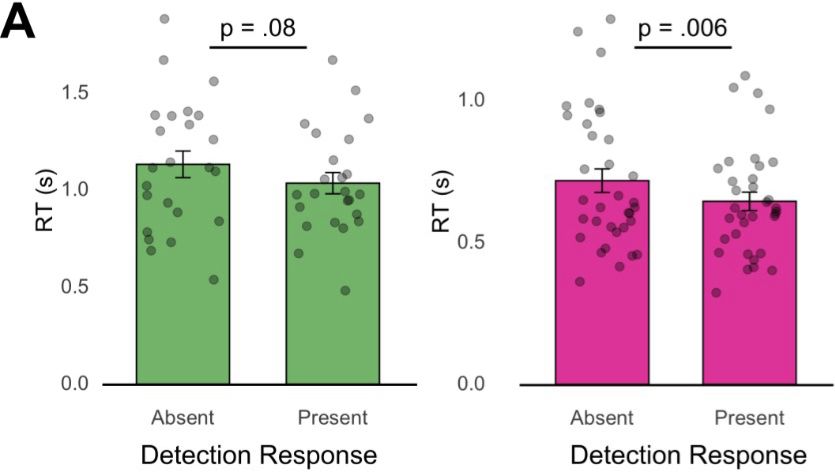
A similar effect has been widely reported in perceptual detection - where reporting not seeing a stimulus takes more time than reporting that you saw it.
21.07.2025 14:57 — 👍 2 🔁 0 💬 1 📌 0

🚨New preprint🚨 out with the dream team @matanmazor.bsky.social @giuliacabbai.bsky.social and @nadinedijkstra.bsky.social!
We report a novel and robust effect across five different datasets: vivid imagery is reported faster than weak imagery.
📝: osf.io/preprints/ps...
21.07.2025 14:57 — 👍 54 🔁 10 💬 2 📌 4
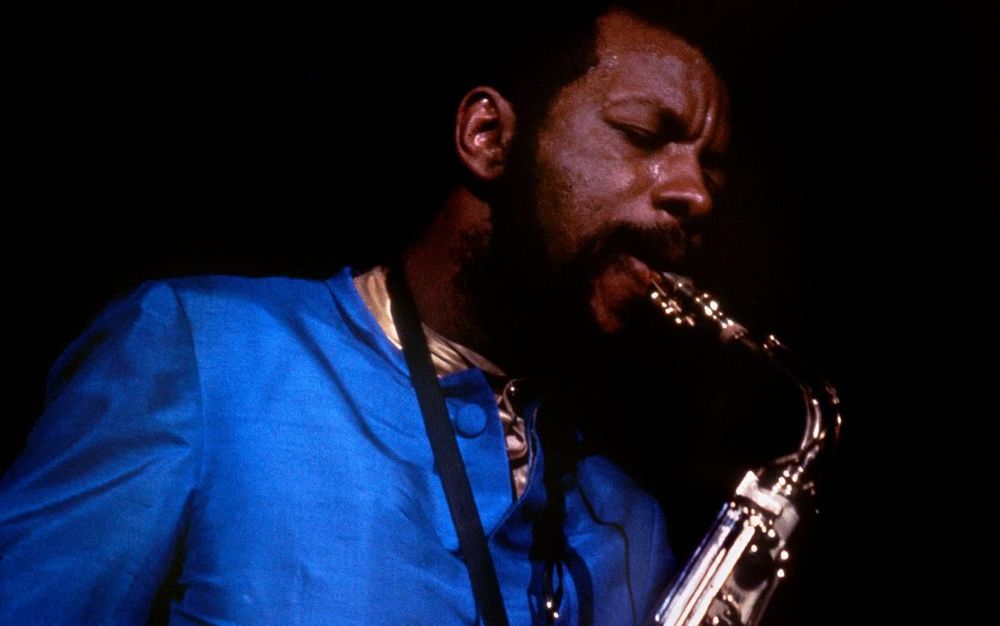
How jazz and dolphins can help explain consciousness | Aeon Essays
Is consciousness like jazz, something hard to pin down? Or is it more like the biology of dolphins, odd but natural?
’Consciousness is the taste of a lemon, the blueness of the sky’ This approach to defining consciousness is intuitively compelling, but how exactly does it work? And what kind of insight into consciousness might it deliver?
17.07.2025 10:14 — 👍 12 🔁 7 💬 1 📌 0
Programme – MEG UKI
Hellohello again! Tomorrow at 5:15pm I’m giving a short talk on our latest MEG study about our very well-loved oscillating perceptual predictions @meguki2025.bsky.social. Come by and talk brains!
There are amazing talks and very cool science happening all around! MEGUKI 2025👌
16.07.2025 13:02 — 👍 14 🔁 4 💬 0 📌 1

Betar tweeting "We urge all Jews to evacuate NYC," retweeting a Republican Jewish Coalition tweet reading "Evacuate NYC immediately. Thank you for your attention to this matter."
https://x.com/Betar_USA/status/1937687892933116384
And the Being Normal olympics begin.
25.06.2025 03:31 — 👍 5793 🔁 693 💬 126 📌 90
research fellow @clscohorts.bsky.social
epidemiology, causal inference, methods
Cognitive neuroscientist with many interests, including why our stomachs churn when we feel disgust. I also write books on programming; teach Python, statistics, and machine learning; and develop open-source software.
https://www.dalmaijer.org
Lecturer at Birkbeck School of Psychological Sciences
(altered states of) consciousness, neuroscience, phenomenology | research assistant at GHU psychiatrie & neuroscience (Paris)
ENS UCL MaastrichtUniversity
Professor of Psychology and Science Communication | Award-winning science writer | Screen Time | Social Media | Smartphones | Video games | https://linktr.ee/unlockedbook
Associate Professor at UCL Experimental Psychology; math psych & cognitive psychology; statistical and cognitive modelling in R; German migrant worker in UK
cogsci, biopsych & ling major @UMich. visiting @UCL. interested in consciousness, the self, emotion, language, philosophy & theories of AI
Interested in confidence and cognitive control. Also in diving and swimming.
PhD Student- Cognitive Sciences,
Laboratoire des Systèmes Perceptifs (LSP)
ENS - PSL.
Aspiring cognitive computational neuroscientist.
Postdoc @ Columbia DSI (w Michael Shadlen & Rich Zemel), Rothschild Fellow & Zuckerman STEM program.
Past: PhD @ ELSC, Huji, Azrieli Graduate Fellow.
Twitter\X: @neuro_gal
Website: gal.vishne.com
neuromantic - ML and cognitive computational neuroscience - PhD student at Kietzmann Lab, Osnabrück University.
⛓️ https://init-self.com
neuroscientist in consciousness they/them
postdoc on cognitive neuroscience. I’m interested in mental imagery, mental simulation and aphantasia.
my website: https://jianghao-liu.github.io
PhD student at TAU. Trainee Clinical Psychologist.
BBSRC- LIDo PhD student in cognitive + computational neuroscience @ Birkbeck and UCL 🧠🏳️🌈🌱
Cognitive Science, language, open research, PsyArXiv, music, terrible puns. Maynooth University, Ireland.
https://www.maynoothuniversity.ie/people/dermot-lynott
Computational cognitive neuroscientist @cnrs.fr 🧠💻
Soon at #TRF4
Inner speech, mental/motor imagery, cognitive/statistical modelling, EMG, M/EEG, open and slow science. https://lnalborczyk.github.io
Imagination, working memory, brains, audition, music, (i)EEG, MEG. Postdoc at University of Copenhagen. Former UC Berkeley, Aarhus Uni. Salsa dancer. Colombian.
www.neurodavid.com
The internet's friendliest banshee, PhD.
The Werner Herzog of dynamic systems neuroscience.
Occasional Gàidhlig, constant shouting.
Researching how the brain adapts to neurodegeneration using music.
She/her.
She/her | email: gt342@cam.ac.uk | PhD student http://orben.group | computational & cognitive approaches to study technology use | Views my own | Happy to chat about Masters or PhD applications/experiences, send me an email!

